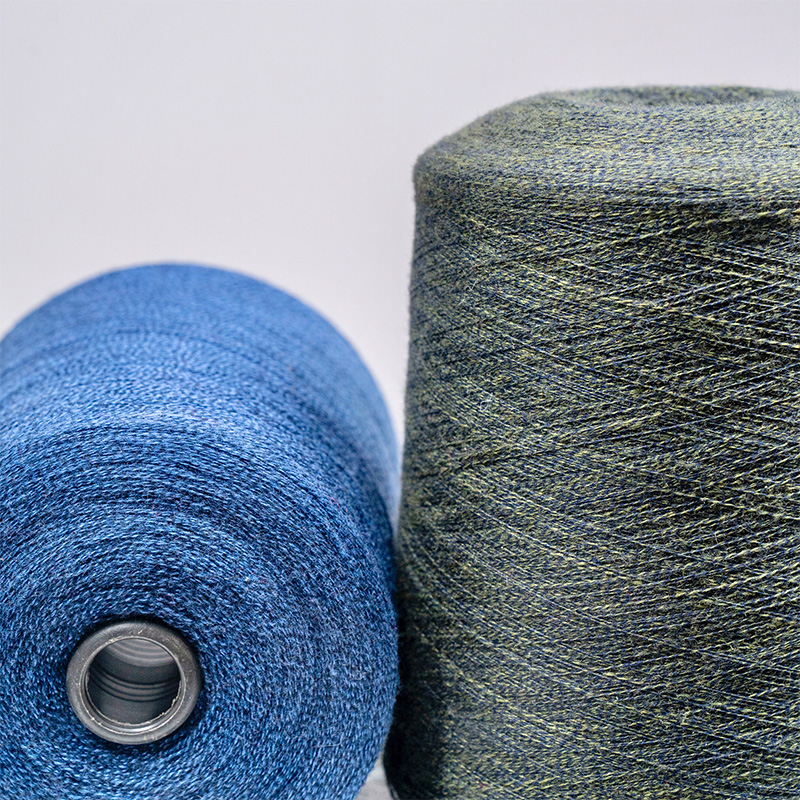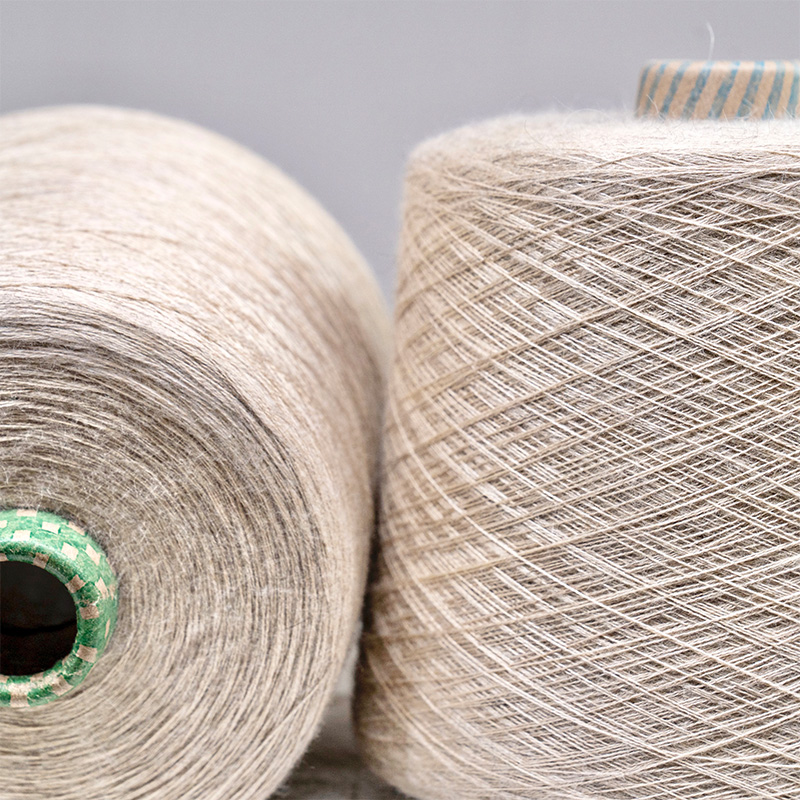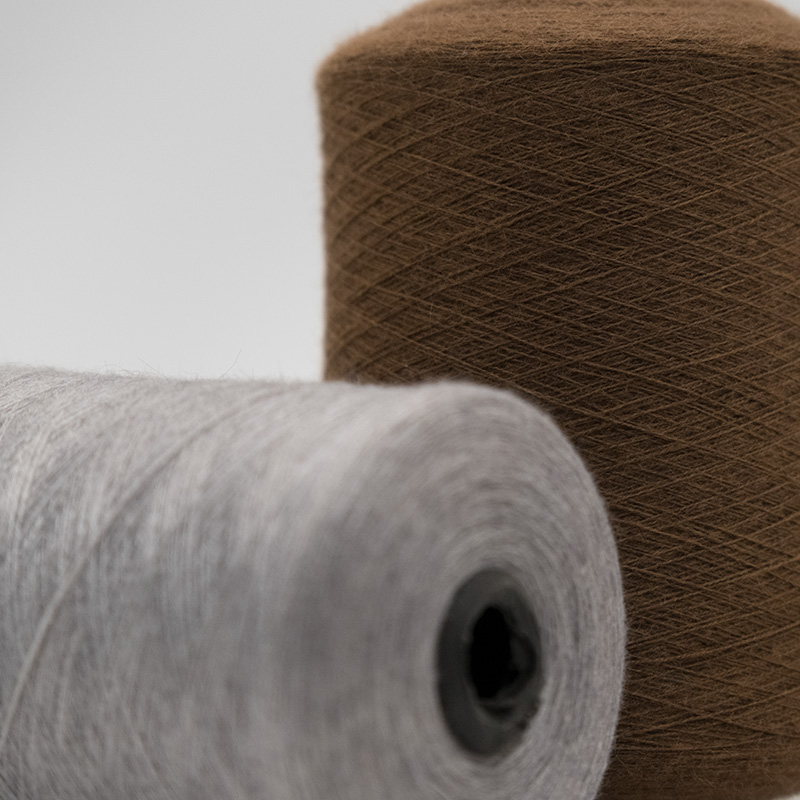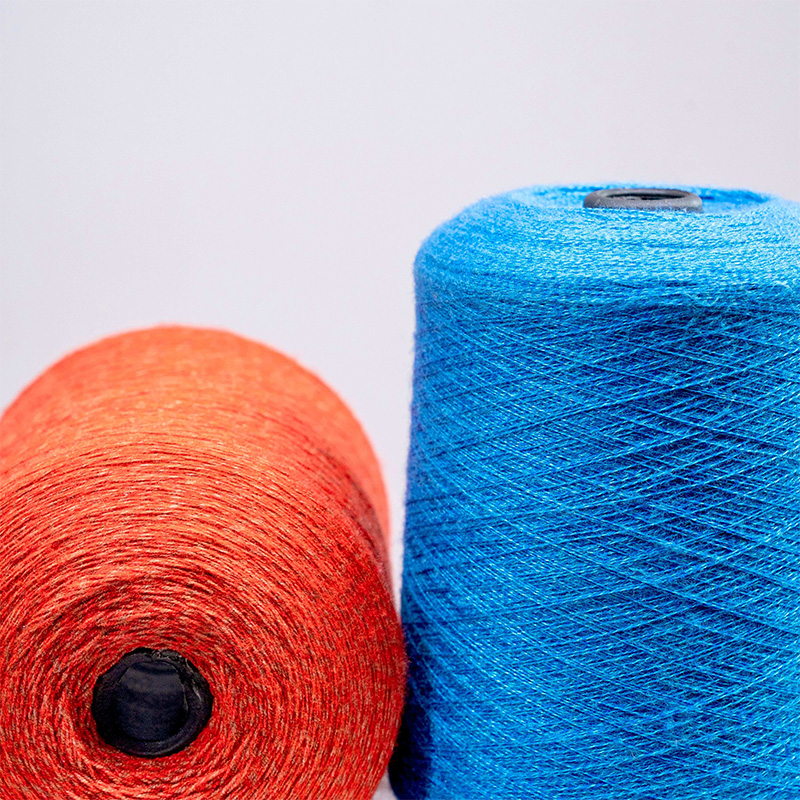Angora-like fleece yarn: guide to choose, use, and care
2025-11-07
What is angora-like fleece yarn?
Angora-like fleece yarn describes commercial yarns and blended fleeces engineered to mimic the soft halo, warmth, and drape of true angora (rabbit) fiber without relying solely on pure angora. These yarns typically combine fibers such as superfine alpaca, brushed mohair, extrafine merino, nylon, or synthetic microfibers with a brushed finish or haloing technique applied during spinning. The goal is to achieve plushness, loft, and the characteristic fuzzy halo while improving durability, reducing shedding, and addressing animal welfare or allergy concerns.
Fiber blends and construction — what to look for
Not all angora-like yarns are created equal. When evaluating a yarn marketed as "angora-like" or "haloized," check these components and construction details to predict performance.
Common fiber ingredients
- Alpaca (superfine): adds warmth and silkiness but can be slippery — gives loft and reduced pilling compared with angora.
- Mohair (kid/young): creates a strong halo with good elasticity; blended with silk or nylon for strength.
- Merino (extrafine): improves softness and stitch definition; used when a clearer stitch pattern is desired.
- Synthetic microfibers (nylon, acrylic): used sparingly to strengthen and reduce cost; can affect breathability.
- Brushed finishes: mechanical brushing post-spin teases fibers into a halo and is how many angora-like effects are produced.
How composition affects use
A higher proportion of animal fibers (alpaca/mohair/merino) gives superior warmth and hand, while synthetics add resilience and lower price. If durability and low shedding are important, prioritize blends that list nylon or silk with the animal fiber, or look for tightly plied construction with a lightly brushed outer halo.
Choosing the right angora-like yarn for your project
Match yarn characteristics with the project requirements—drape, halo level, stitch definition, durability, and care. The guidance below helps pair projects and yarn types so you avoid surprises like excessive fuzz obscuring lacework.
Quick selection checklist
- For lace shawls: choose angora-like yarns blended with silk or merino for drape and slightly less halo to preserve stitch definition.
- For sweaters: pick blends with nylon or silk for stability and reduced pilling; midweight (sport–DK) halo yarns make cozy garments.
- For accessories (hats, mitts): prefer yarns with a higher synthetic content or tighter plies to withstand abrasion, or use angora-like as a lace-weight over a sturdier base.
- For baby garments: avoid heavy halos that trap lint and check for hypoallergenic labeling; choose low-shed blends and machine-washable options if possible.
Practical knitting and crocheting tips with halo yarns
Working with angora-like fleece yarn requires slight technique adjustments to account for fuzz, lost stitch definition, and potential slippage. The tips below are proven in practice.
Needles, hooks and gauge considerations
- Use a needle/hook one size larger than the label suggests if you want a more open fabric and to show the halo; for defined stitches, stay true to recommended gauge.
- Check gauge by blocking a swatch—halo fibers often compress or bloom when blocked and gauge can change.
- Use smooth, non-pointy tools for mohair-like blends if fibers tend to catch; conversely, sharper points help with dense, blended plies.
Stitch patterns that succeed
Simple stitches—stockinette, garter, ribbing, large cables and bold lace—work best with haloed yarns. Fine textured patterns and tiny cables can vanish under fuzz. When you want texture but also halo, try bold motifs or slipped-stitch patterns that read through the fiber.
Dyeing, blending, and color handling
Angora-like yarns behave differently when dyed because blends include synthetics and long guard fibers. If you plan to dye or over-dye, consider fiber content first.
Practical dyeing rules
- Test-dye a sample: blended yarns can take dye unevenly—always swatch and dry to see true color and halo effect.
- Use acid dyes for protein fibers (alpaca, merino) and disperse dyes or low-temperature fiber-reactive dyes for synthetics; mixed yarns may require multi-step processes.
- Overdyeing blended halo yarns often deepens the halo more than the core—consider a slightly lighter base shade if you want a soft halo contrast.
Care, washing, and long-term maintenance
Proper care extends the life of angora-like yarn garments and limits shedding. Read labels first—some blends may be machine-washable while others require hand wash and gentle handling.
Step-by-step hand-wash method
- Fill a sink or basin with lukewarm water and a small amount of gentle wool wash or mild shampoo.
- Submerge the garment, press gently—do not agitate or rub, which causes felting in protein fibers.
- Rinse in lukewarm water until clear, then press out water (do not wring). Roll in a towel to remove excess moisture and lay flat to dry reshaping as needed.
Pilling and shedding: prevention & fixes
Pilling can occur with any fuzzy yarn; to reduce it, use tighter gauge in high-wear areas, avoid heavy abrasion, and choose blends with stronger core plies. Remove pills gently with a fabric shaver or by hand—go slowly to avoid snagging fibers.
Comparing angora-like options: quick reference
This concise table compares typical angora-like blends so you can quickly match a yarn to project needs.
| Blend | Halo | Durability | Best uses |
| Mohair + silk | High | Medium–High | Shawls, airy sweaters |
| Alpaca + nylon | Medium | High | Everyday sweaters, hats |
| Merino + brushed acrylic | Low–Medium | High | Children's wear, affordable accessories |
| Pure angora (for reference) | Very high | Low–Medium | Luxury pieces, limited-wear items |
Sourcing, sustainability and allergies
Buyers increasingly expect transparency. For angora-like yarns, look for clear fiber percentages, country of origin, and certifications (Oeko-Tex, RWS for wool, and cruelty-free or no-live-plucking claims for angora-containing products). If you or recipients have allergies, choose synthetic-blended halo yarns or thoroughly test a swatch against skin before committing to a full garment.
Final practical recommendations
- When in doubt, swatch and block: halo fibers change appearance after blocking—always test the finished look.
- Combine halo yarn with a sturdier partner yarn held double (e.g., lace angora-like held with fingering merino) to create warm, durable fabrics with dramatic halo effects.
- Label and instruct: if you gift or sell finished items, include fiber content and care instructions to preserve the garment's life.
- Test dye and care methods on scraps before applying to full skeins or finished garments to prevent irreversible damage.
Angora-like fleece yarns offer a practical and often more ethical route to the sought-after haloed look. By understanding blends, choosing the right yarn for the intended use, testing, and applying careful handling during both construction and care, you can achieve the luxurious appearance of angora with improved durability and lower maintenance.



 English
English русский
русский Español
Español 中文简体
中文简体

















